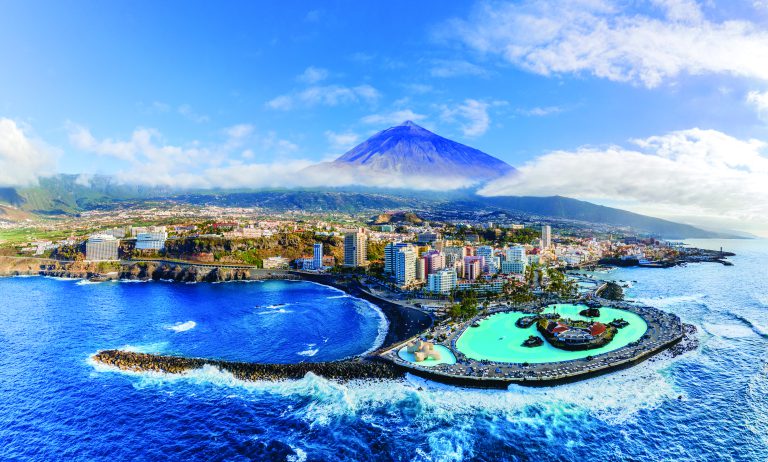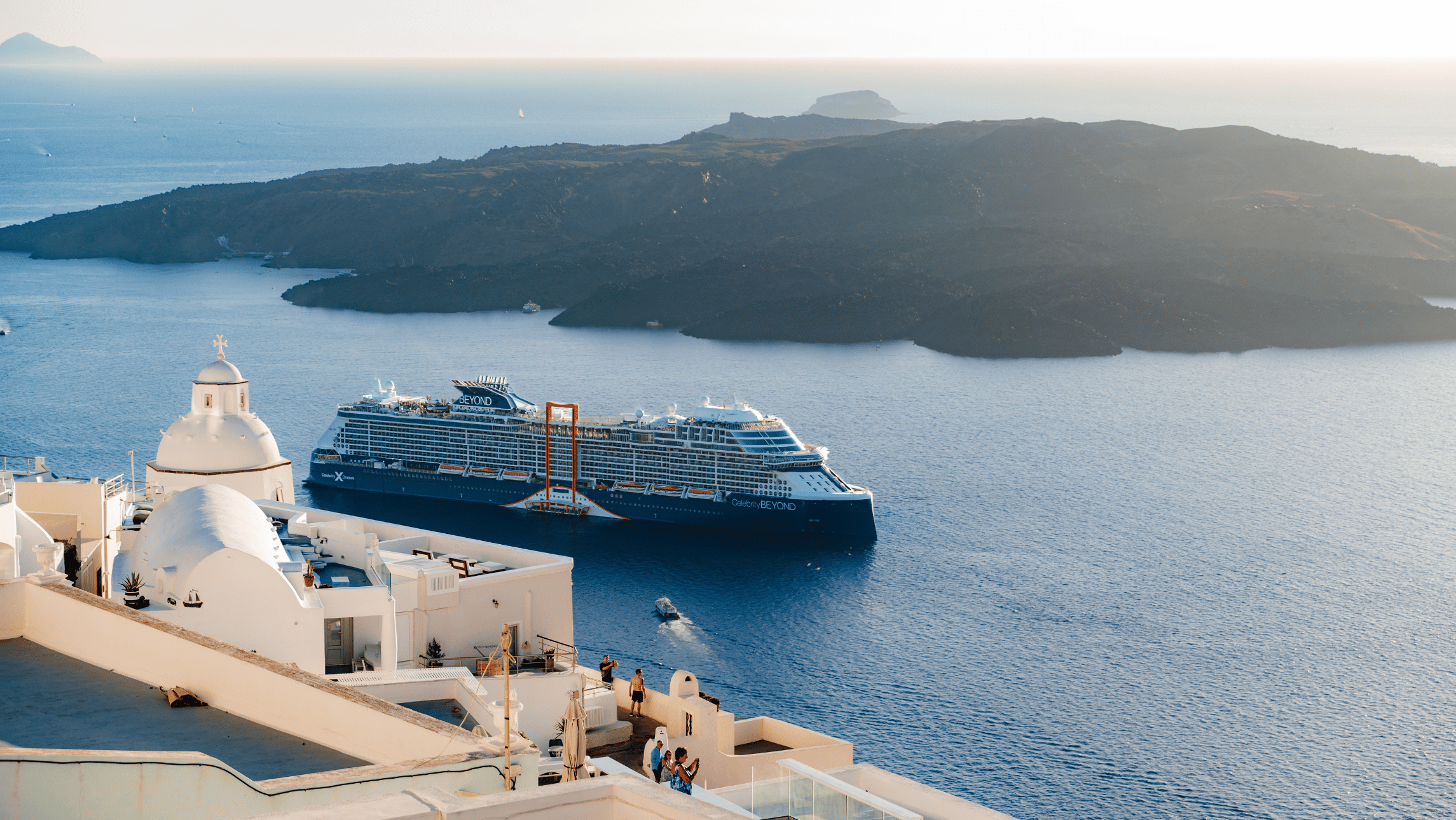The Canary Islands, scattered across the Atlantic off the coast of West Africa, may not seem an obvious choice when you’ve travelled all the way from Australia to tour Europe. You won’t find the glamour of the French Riviera, or the concentration of antiquities of Greece.
And yet. The Canary Islands are extraordinarily beautiful, and given that this is one single volcanic archipelago, astonishingly varied in geology and landscape. There’s a fantastic food scene and a multi-layered history, from early Berber settlers from Africa, just 100 kilometres away, to the legacy of great explorers like Christopher Columbus. You’ll find a non-stop array of activities, too; there aren’t many places where you can throw a snowball on top of a 3,000-plus-metre mountain and then head down to the beach for tapas and wine with your toes in the sand.
Many sun-seekers don’t stray beyond the busy resorts of southern Tenerife, Gran Canaria and Lanzarote. But cruise ships barely touch these areas, instead, they dock in elegant capital cities like Santa Cruz de Tenerife, or Las Palmas in Gran Canaria, where you’ll find atmospheric old quarters, colourful markets and authentic Spanish culture and cuisine.
An even more compelling reason to visit is the superb hiking, amid ancient forests and jaw-dropping mountain scenery, from smouldering volcanoes to cliffs that plunge straight into the sea.
Plenty of cruise lines visit the Canary Islands, summer and winter, among them Royal Caribbean, Celebrity Cruises, Cunard, Azamara, Hurtigruten and Sea Cloud.
In the European winter, a lot of cruises depart from British ports, adding a few sea days at either end and often, a stop along the way in maybe Lisbon, or Cadiz. Others sail from ports in continental Europe; Hurtigruten has an expedition from Lisbon in November 2022, notable because it calls at some of the lesser-known islands, including El Hierro, La Gomera and Madeira’s volcanic neighbour, Porto Santo, fringed by long, sandy beaches.
Some lines, like Celebrity, feature the Canary Islands on a Rio de Janeiro to Lisbon voyage or from Southampton to Miami. P&O Cruises offers fly-cruises in winter, so you’d fly from a UK airport to Tenerife, skipping the sea days, while Azamara will sail a handful of Canary Islands Intensive Voyages from Gran Canaria in 2023 and 2024. From Australia, your best bet of joining these is to connect via Madrid.
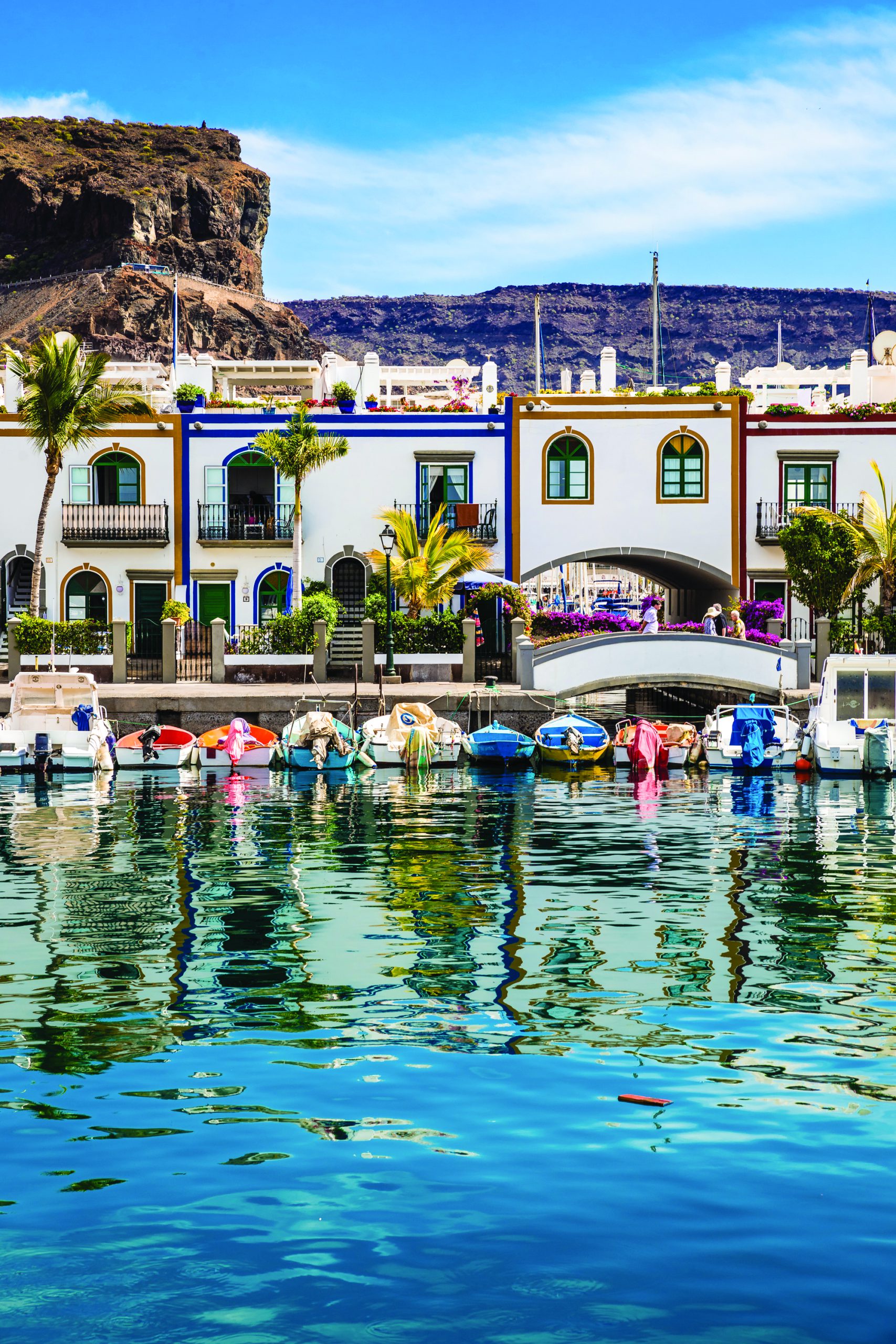
Tenerife
The biggest and busiest of the islands, Tenerife is dominated by the conical, often snowcapped peak of Teide, Spain’s highest mountain at 3,718 metres. Most ships stop at Santa Cruz, a handsome city with wide boulevards, grand old buildings and a gourmet market, Nuestra Señora de Africa.
Stalls selling piles of island-grown oranges, pineapples and papayas are testament to the islands’ subtropical climate. San Cristóbal de La Laguna, with its cobbled streets lined with mansions in dusky pink, ochre and sky blue, is widely regarded as the prettiest town on the island.
It’s so beautifully preserved that it’s a UNESCO World Heritage site.
Gran Canaria
Ships dock at Las Palmas, the island’s capital, in the north. The city itself is a delight, with a gorgeous old quarter, Vegueta, and a fine urban beach. Join a walking tour around Vegueta to the house where Columbus stayed briefly in 1492 as a stop on his epic voyage to the Americas. Whitewashed houses, their elaborate balconies carved from Canarian pine, line cobbled alleys. On Plaza de Santa Ana, you’ll find out how the archipelago got its name when you come across a series of handsome bronzes of dogs in front of the cathedral. ‘Canaries’ is believed to derive from the Latin canum, meaning dogs, coined by early explorers who were surprised by the large herding dogs they found here. Or the barking of sea lions; nobody really knows for sure.
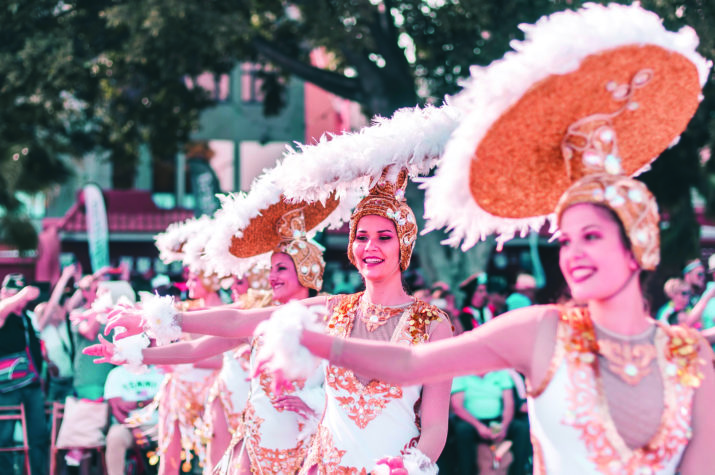
Lanzarote
The starkest of the Canary Islands, Lanzarote is black, fiery and windswept. Amazingly, decent wine is produced in this harsh landscape, the vines grown in little pits in the ground, protected from the wind by semicircles of volcanic stones. Any refreshment stop on a tour will include a tasting of the local Malvasía white, the wine accompanied by tiny boiled potatoes dipped in a tangy tomato and pimento sauce.
Lanzarote’s architecture is defined by the work of local artist and early sustainability adopter César Manrique, who worked with the government in the 1960s to create an aesthetic for the island: white, sugar-cube houses on which even the woodwork reflected the colours of nature, green and blue. It’s thanks to Manrique that Lanzarote has no high rises.
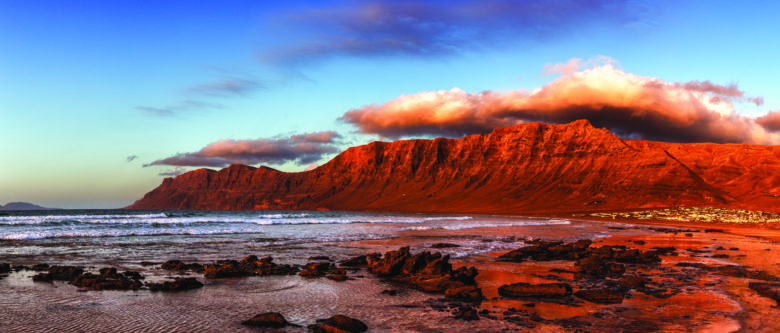
La Gomera
Tiny La Gomera lies off the coast of Tenerife. A highlight here is without doubt the Garajonay National Park, one of the last examples of true rainforest in Europe, a living remnant from more than two million years ago. The laurel trees here, some of them 500 years old, are festooned with green-grey lichen, hanging in beard-like strands, the walking trails lined by giant ferns. Join a hike and then stop for tapas in the tiny capital, San Sebastián, where ships dock.
La Palma
La Palma hit the headlines with some force last September when Cumbre Vieja, one of its volcanic vents, started erupting, an explosion that lasted several months and caused considerable damage. The volcano is quiet now but the jaw-dropping Parque Nacional de la Caldera de Taburiente is a good indication of the dramatic forces of nature that created this otherwise sleepy island. The views from the park’s lookout are stupendous. Ancient, sheer-sided lava cliffs plunge hundreds of metres into wooded valleys, spindly, gravity-defying pines clinging to their lower slopes.
Fuerteventura
The clue is in the name here: Fuerteventura means ‘strong wind’, and this bleak landscape of arid mountains, red-gold plains and stretches of white-sand beach backed by rolling dunes is a big lure for windsurfers and kiteboarders. Ships dock in Puerto del Rosario but your best bet is to head straight for Parque Natural de Corralejo, for those dazzling beaches, or inland to an almost Martian landscape. It’s possible to hike up the 400-metre Mount Tindaya, regarded as sacred and the site of hundreds of examples of ancient Guanche rock art.

Madeira
Part of Portugal, volcanic Madeira lies some 500 kilometres north of the Canary Islands. Madeira is lush, subtropical and volcanic, with towering cliffs and villages perched high above black-sand beaches. If you want a sense of the island’s sheer drama, head for Cabo Girão, the highest promontory in Europe. Here a glass platform cantilevers over a plummeting drop, surf foaming on a dark sand beach some 580 metres below.
First timers tend to stay in Funchal, the pretty capital, for the day, as there’s a lot to see. Take the cable car to the top of Monte, the mountain that overlooks the city, and visit the gorgeous Madeira Botanical Garden nearby. There’s an unusual descent back into town in wicker toboggans, controlled by two drivers, racing down impossibly steep, narrow lanes at breakneck speed.


